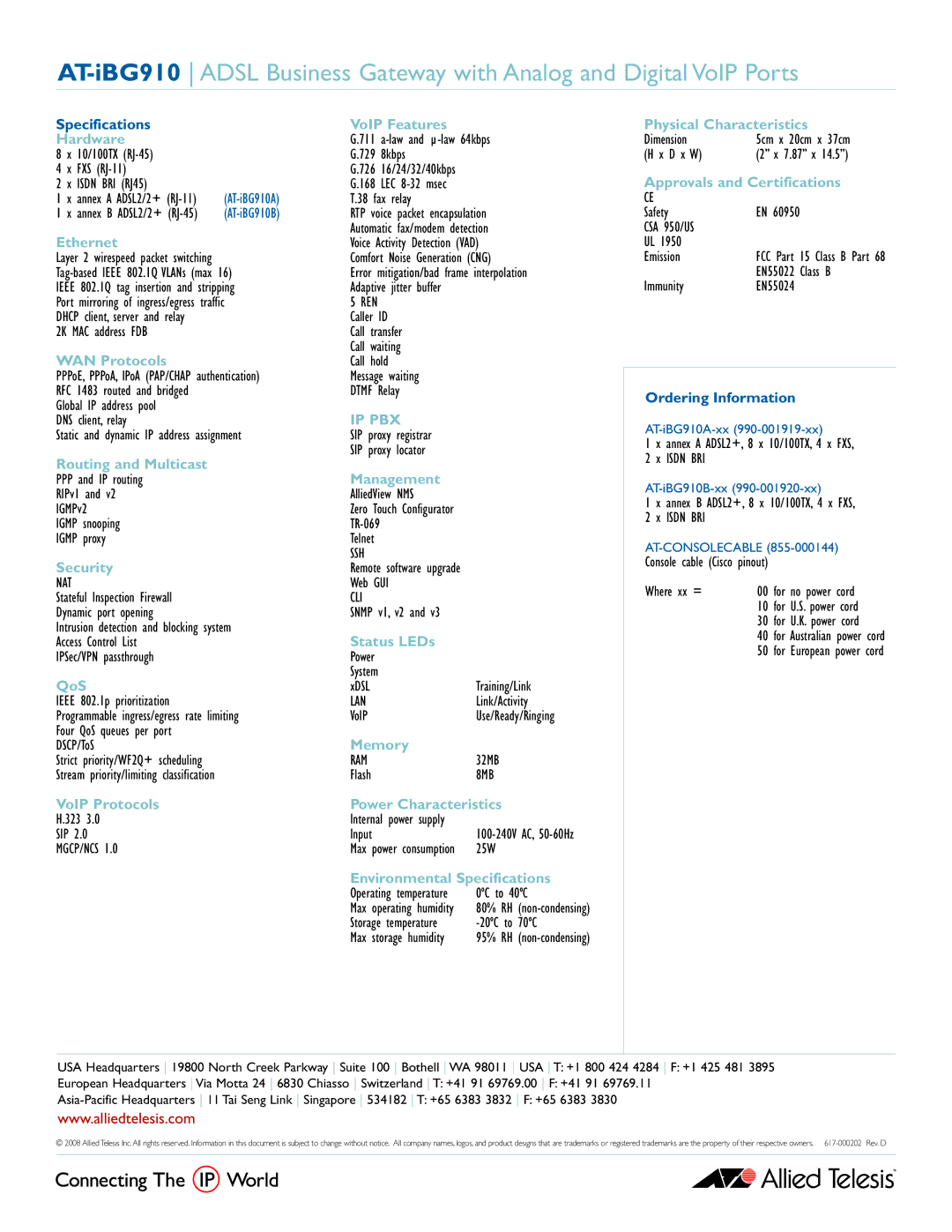AT-iBG910 specifications
The Allied Telesis AT-iBG910 is a robust networking solution designed for enterprise-scale applications, providing reliable connectivity and advanced features that cater to modern networking demands. This innovative device boasts a compact design, making it suitable for various environments, including corporate offices, data centers, and industrial applications.One of the main highlights of the AT-iBG910 is its support for advanced Layer 2 and Layer 3 networking capabilities. This dual-layer functionality enables efficient routing and switching, offering seamless integration with existing network infrastructure. The device is equipped with multiple Gigabit Ethernet ports that ensure high-speed data transmission, catering to the needs of bandwidth-intensive applications.
Another significant feature of the AT-iBG910 is its enhanced security protocols. The device supports robust encryption methods, such as IPsec and SSL, ensuring secure data transmission across the network. Moreover, its built-in firewall and intrusion detection system provide an additional layer of security, protecting against potential threats and unauthorized access.
Allied Telesis has also integrated its signature self-healing technology into the AT-iBG910. This feature allows the device to automatically detect and recover from network failures, ensuring minimal downtime and uninterrupted service. When issues arise, the device quickly reroutes traffic, maintaining network performance and reliability.
Energy efficiency is another crucial aspect of the AT-iBG910. The device is designed with green technology in mind, featuring power-saving modes that reduce energy consumption during periods of low activity. This not only helps lower operational costs but also contributes to a more environmentally friendly network infrastructure.
Furthermore, the AT-iBG910 supports various management protocols, including SNMP and RMON, enabling network administrators to maintain control over their networks efficiently. The device's intuitive web-based interface allows for easy configuration and monitoring, ensuring that network performance can be optimized and any issues swiftly addressed.
In summary, the Allied Telesis AT-iBG910 is a feature-rich, reliable, and secure networking solution ideal for businesses looking to enhance their network infrastructure. With its advanced technologies and characteristics, including Layer 2 and Layer 3 support, robust security, self-healing capabilities, energy efficiency, and comprehensive management options, it stands out as a top choice for enterprises aiming to achieve operational efficiency and resiliency.

